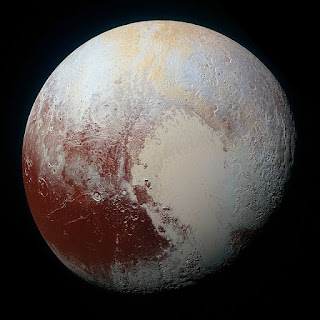1. Pluto is named after Hades, the Greek God of the underworld. Pluto is the Roman translation.
2. Clyde Tombaugh discovered Pluto in 1930.
3. Pluto has a moon, Charon, about half the size of the planet. The Hubble Space Telescope, has found two more moons orbiting Pluto. Called Nix and Hydra, they are named after the Greek goddess of darkness (Nyx) and a nine-headed serpent that in Greek mythology guards the underworld.
4. Pluto orbits the Sun once ever 248 years.
5. Pluto is so far from the Sun, it takes sunlight over 5 hours to reach it. In contrast, sunlight reaches the Earth in 8 minutes.
6. Pluto is believed to have an average temperature of roughly -63 degrees Celsius.
7. Pluto is two-thirds the size of our Moon.
8. Pluto has an eccentric orbit, which means it is occasionally closer to the Sun than Neptune.
9. The first time we will visit Pluto for a significant orbital period is in 2015, when the probe New Horizons is scheduled to arrive. It was launched in January 2006.
10. One theory suggests Pluto is not a planet, but a twin moon to Triton. Triton is the moon orbiting Neptune and seems to have nearly the same characteristics of Pluto.
